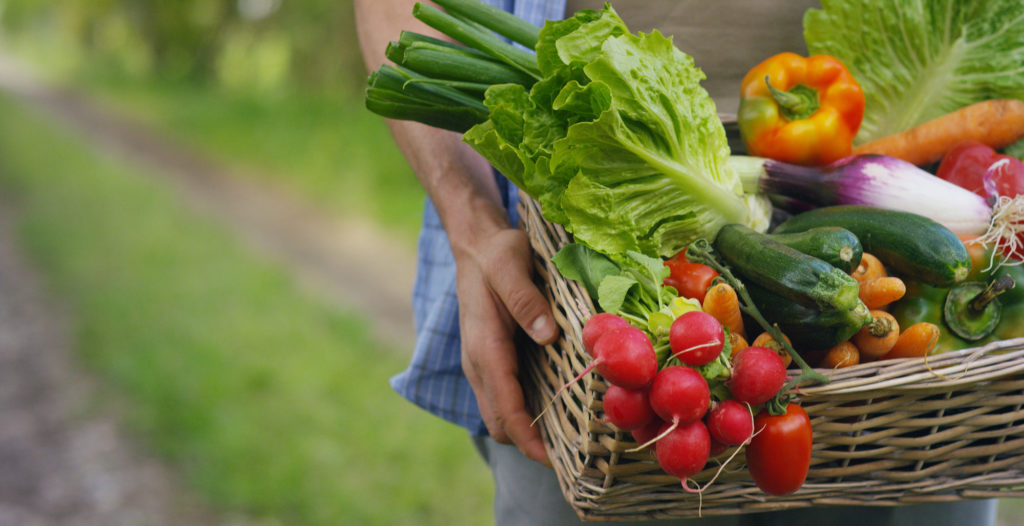
As we’re settling into summer, you may be thinking about growing a summer vegetable garden. Growing your own vegetables is a great way to supplement your grocery needs, and it can provide a great sense of pride. Not to mention, it’s a fun outdoor hobby in the summer!
If you’ve never grown vegetables, you may be feeling a little lost. Where should you start, and what needs to be done? Below, we’ll walk you through the steps of growing your first vegetable garden.
Pick the Right Spot
The first thing you’ll want to consider when planning your vegetable garden is where you’re going to place it. Sunshine is, of course, among the most important factors in this decision. You want to choose someplace that has at least six hours of full sunlight each day.
But you also want to keep other environmental factors in mind. Make sure you don’t pick someplace that’s going to flood every time it rains. And if your location is particularly windy, you may want to build some sort of shelter to protect your little plantlings.
Raise Your Garden
While you certainly can plant directly in the ground, there are a number of reasons that using raised beds is a good idea. First of all, it gives you more ability to control the soil quality. Trying to improve soil in one small part of your yard can be a challenge, and with a raised bed, you can simply add high-quality soil.
Raised beds also help improve vegetable growth because there’s much less compression of the soil. Depending on how you build them, raised beds may help prevent pests in your garden. And using raised beds will help reduce the number of weeds in your garden.
Make Sure the Soil is Good
It should come as no surprise to you that soil quality is one of the most important considerations when establishing a garden. You want your soil to have the right cocktail of moisture, minerals, consistency, and drainage. Inadequate soil will lead to inadequate vegetables – it’s as simple as that.
If you plan to grow your vegetables directly in the ground, you’ll want to test your soil to determine its makeup. Once you know what your soil is lacking, there are ways to add those components in. Learn more about testing and adjusting your soil here.
Get Spaced Out
One of the biggest temptations when you first plant a vegetable garden is to overcrowd. After all, how much space do tiny little seeds, and later, tiny little plants, need? The honest answer is, “More than you think.”
What you have to remind yourself when you’re planting is that where you plant those seeds now is where the full-size plants are going to wind up growing. You need to make sure to leave enough space around each seed for a full plant to grow, and then some more after that. Check the back of your seed packets for guidelines on spacing.
Use Good Seeds
On the subject of seed packets, you want to make sure you give your plants the best head start they can get. Not all seeds are created equal, and subpar seeds can be doomed from the start. When you buy your seeds, make sure you’re getting the best.
Talk to your local nursery or garden center about what varieties of seeds grow best in your area. There are different species of the same vegetable, so make sure to ask which will do best. Look around at online nurseries for high-quality seeds.
Give Them a Drink
Once you’ve planted your wonderful seeds in nourishing soil in the perfect spot, it’s time to give your seedlings a drink. At first, it will be very important to keep your baby plants well-watered. But you also want to be sure not to overwater.
For the first few weeks, your goal should be to keep your soil slightly damp most of the time. You don’t want the ground to be flooded or so wet that it rots your seeds. But neither do you want it to be bone-dry; try using a mister to strike the right balance.
Keep the Weeds Out
As your baby plants begin to grow in their wonderful environment, so will other less welcome plants. Weeds are an inevitable part of gardening. Using raised beds can help reduce weed growth, but you can be sure some will still sneak in.
Keep a close eye on your garden, and carefully remove any weeds as they come up. If you’re having trouble distinguishing baby plants from weeds during those first few weeks, give them both a little time to grow, and then run an image search to see what your baby plants should look like. The distinctions will get easier as your plants grow.
Keep Things Moving
After several weeks, your garden should be ready to harvest! (If you need tips on when to harvest your vegetables, check out this helpful page.) But your work isn’t finished after harvest time.
It’s important for soil health that you rotate what crops you grow where each year. Growing the same plant in the same spot year after year will deplete certain nutrients from the soil, leaving you with unhealthy plants. Look up a chart for crop rotation, and follow that as closely as possible.
Enjoy Growing Vegetables
And just like that, you’re growing vegetables! You, your family, and your friends can enjoy the fruits of your labor all summer, and maybe into the fall, depending on if you preserve your food. And maybe next year, you’ll want to grow a bigger, better garden!
If you’re looking for more informative, interesting articles like this one, visit the rest of our site at Curiosity Human. We cover every topic from movies to people to music to television. If there’s an article you’d like to read that you can’t find on our site, contact us and we’ll see what we can do.

